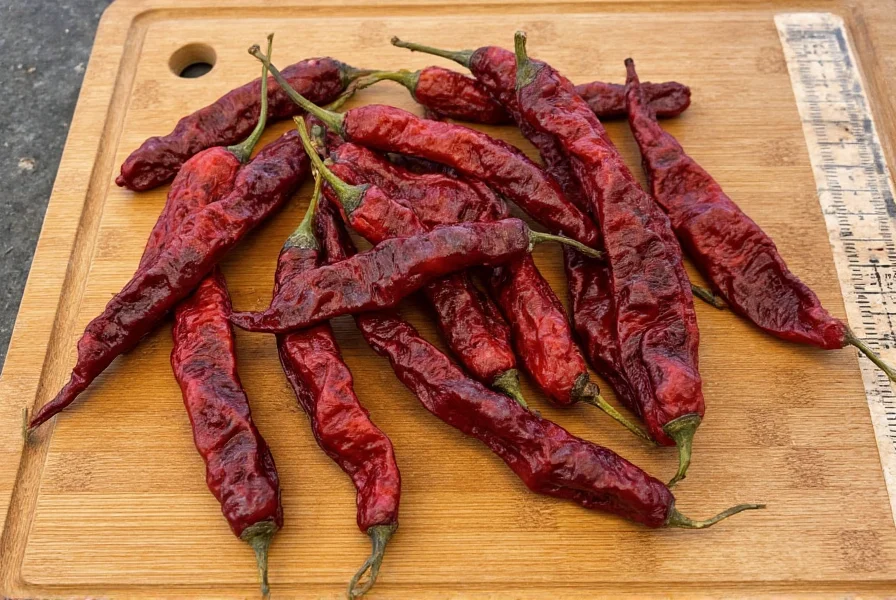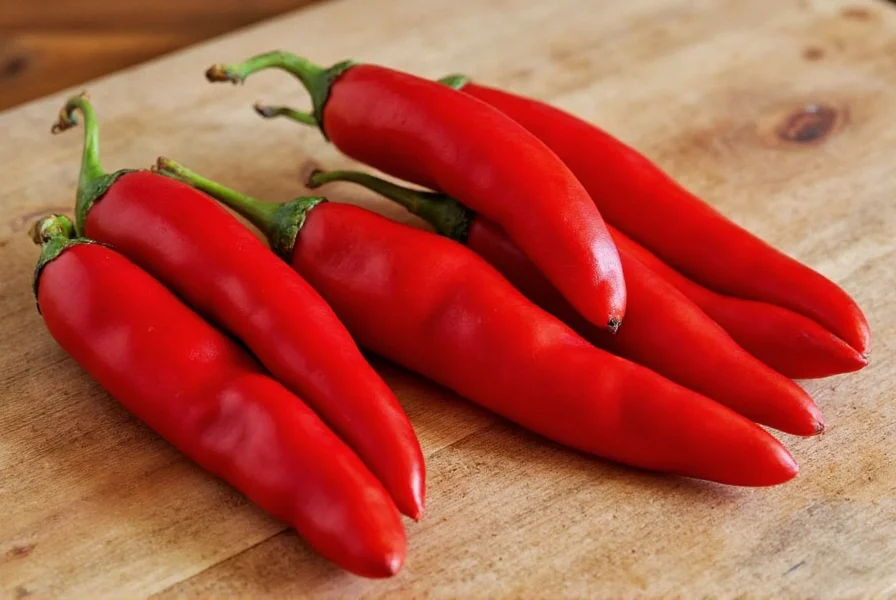Understanding what are ancho chili peppers begins with recognizing they're not a separate pepper variety but rather the dried form of fresh poblano peppers. This transformation through drying creates their distinctive characteristics that make them indispensable in many traditional recipes. Unlike their fresh counterparts, dried anchos develop a more concentrated, nuanced flavor profile that adds depth to sauces, stews, and marinades.
Origin and Transformation Process
Ancho chili peppers originate from Mexico, where they've been cultivated for centuries. The term "ancho" means "wide" in Spanish, referring to their broad, flat shape. When poblano peppers reach full maturity and turn deep red, they're harvested and carefully sun-dried until they develop their signature wrinkled appearance and deep mahogany color.
The drying process fundamentally changes the pepper's chemical composition, converting certain compounds that create the unique ancho chili pepper flavor profile. This transformation explains why fresh poblanos and dried anchos taste distinctly different despite being the same pepper at different stages.

Physical Characteristics and Heat Level
Ancho peppers typically measure 4-6 inches long and 2-3 inches wide at their broadest point. Their leathery, wrinkled skin conceals a thick flesh that rehydrates well for cooking. When evaluating ancho chili pepper heat level, they rank between 1,000-2,000 Scoville Heat Units (SHU), placing them in the mild to medium range.
For comparison, this makes anchos significantly milder than jalapeños (2,500-8,000 SHU) and much milder than habaneros (100,000-350,000 SHU). Their heat is often described as approachable with a slow-building warmth rather than an immediate burn, making them versatile for various palates.
| Pepper Type | Scoville Heat Units | Flavor Profile |
|---|---|---|
| Ancho Chili | 1,000-2,000 | Fruity, smoky, earthy with notes of coffee and chocolate |
| Jalapeño | 2,500-8,000 | Grassy, bright with moderate heat |
| Habanero | 100,000-350,000 | Tropical fruit with intense heat |
Ancho vs. Other Dried Peppers: Clearing the Confusion
Many home cooks confuse ancho chili pepper vs pasilla, but these are distinctly different peppers. While anchos come from dried poblanos, pasillas are dried chilaca peppers. Pasillas are longer, thinner, and darker (almost black), with a more pronounced smoky flavor and slightly higher heat (1,000-2,500 SHU).
Mulato peppers are another common point of confusion—they're actually dried mulato peppers (a different variety from poblanos) that share similar characteristics with anchos but have a darker color and slightly sweeter profile. Understanding these differences is crucial when following authentic recipes that specify one particular dried pepper.
Culinary Applications and Preparation
Professional chefs value anchos for their ability to add complex flavor without overwhelming heat. To properly use dried anchos in cooking, follow these steps for how to use dried ancho peppers:
- Remove stems and seeds (the seeds contain most of the heat)
- Toast whole peppers in a dry skillet for 20-30 seconds per side until fragrant
- Soak in hot water for 15-20 minutes until softened
- Blend into a smooth puree for sauces or use in recipes as directed
The resulting puree forms the base for classic Mexican sauces like mole poblano and adobo. Anchos also work beautifully in rubs for meats, vegetable dishes, and even chocolate-based desserts where their fruity notes complement cocoa.
Substitution Guide for When Anchos Are Unavailable
If you're wondering about ancho pepper substitute options, several alternatives can approximate their flavor profile:
- Guajillo peppers: Similar mild heat with brighter, tangier flavor (use 1:1 ratio)
- California dried peppers: Milder and slightly sweeter (use 1:1 ratio)
- Chipotle powder + sweet paprika: For smoky applications (use 1 part chipotle to 3 parts paprika)
- Smoked paprika + mild red pepper flakes: Quick pantry substitute
Remember that no substitute perfectly replicates the unique flavor of anchos, but these options can work in a pinch. For authentic Mexican dishes, seeking out genuine ancho peppers makes a noticeable difference in flavor complexity.
Storage and Purchasing Tips
When learning where to buy ancho chili peppers, check the international aisle of well-stocked grocery stores, Latin markets, or reputable online spice retailers. Look for peppers that are deeply colored (not faded), pliable (not brittle), and free from moisture or mold.
Store dried anchos in an airtight container in a cool, dark place where they'll maintain quality for 6-12 months. For extended storage, keep them in the freezer where they'll retain flavor for up to 2 years. Properly stored anchos should remain flexible enough to bend slightly without breaking.
Nutritional Benefits
Beyond their culinary value, ancho peppers offer several health benefits. They're rich in vitamin A (from capsaicinoids and carotenoids), vitamin C, and various antioxidants. The capsaicin in peppers, even mild ones like anchos, may support metabolism and provide anti-inflammatory benefits. Dried peppers concentrate these nutrients, making them a nutritious addition to your diet when used regularly in cooking.
Frequently Asked Questions
Are ancho chili peppers the same as poblano peppers?
No, ancho chili peppers are specifically the dried form of ripe poblano peppers. Fresh poblanos are green and have a different flavor profile, while anchos are the dried, mature red poblanos with a deeper, more complex taste.
How hot are ancho chili peppers compared to other common peppers?
Ancho peppers range from 1,000-2,000 Scoville Heat Units, making them milder than jalapeños (2,500-8,000 SHU) and significantly milder than habaneros (100,000-350,000 SHU). Their heat builds gradually rather than hitting immediately, with most of the heat concentrated in the seeds and inner membranes.
What does an ancho pepper taste like?
Ancho peppers have a rich, complex flavor profile featuring notes of dried fruit (particularly raisins and figs), coffee, chocolate, and subtle earthiness. This distinctive taste makes them ideal for sauces and stews where they add depth without overwhelming heat.
Can I substitute ancho chili powder for whole dried ancho peppers?
Yes, but with adjustments. As a general rule, 1 whole dried ancho pepper equals approximately 1½ teaspoons of ancho chili powder. Keep in mind that commercial chili powders often contain additional spices, so for pure ancho flavor, seek out 100% ancho chili powder.
Why are my rehydrated ancho peppers still tough?
Ancho peppers need sufficient soaking time—typically 15-20 minutes in hot (not boiling) water. If they remain tough, they may be too old or were not properly toasted before soaking. Older peppers lose their ability to rehydrate fully. For stubborn peppers, try simmering them gently in broth for 10-15 minutes instead of just soaking.











 浙公网安备
33010002000092号
浙公网安备
33010002000092号 浙B2-20120091-4
浙B2-20120091-4